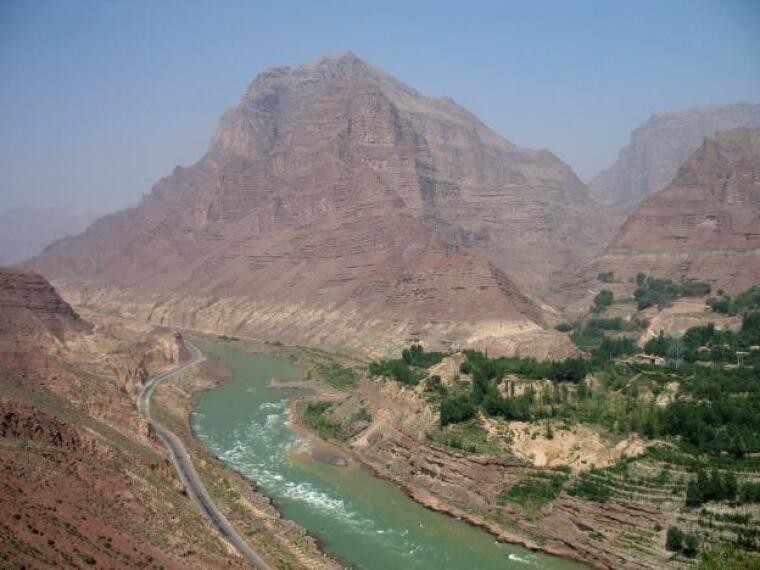Scientists discover new evidence of massive flood in ancient China
Scientists have discovered evidence of a massive flood that occurred in China 4,000 years ago. The evidence conforms to ancient Chinese flood legend about the founding of China's first dynasty. An international team of scientists gathered fossils, rocks and ancient text to find out whether the physical evidence holds up to early historical texts.

According to the legend, Emperor Yu was given a heavenly mandate to rule when he made the floodwaters recede by constructed ditches. For Ken Ham, president of Answers in Genesis, this story is just one of many flood legends. "Whether it's the American Indians or the Fijians, Hawaiians, the Eskimos, Australian Aborigines ... back to the Babylonians, there are flood legends in cultures all over the world," Ham said in an interview with One News Now.
"There are thousands of feet of Flood sediment all over the globe – evidence of a catastrophic global Flood," Ham further claimed. Ham says that the scientists are not prepared to look at the evidence of the global flood because they were "indoctrinated to believe that that was laid down over millions of years."
A paper published in Science journal on Aug. 5 presents evidence that a great flood occurred in 1900 B.C. coinciding with the beginning of the Xia dynasty. The scientists have been working on the scientific paper about Emperor Yu's flood since 2007. Qingwei Sun considers the study "groundbreaking" but explained that they need more data before their findings are widely accepted.
Qinglong Wu, geologist and the paper's lead author, first investigated the Jishi Gorge while working as a postdoc at the China Earthquake Administration's Institute of Geology in Beijing. Wu had to keep quiet at first when he thought that his discoveries from his investigations could be a basis for China's great flood.
"I didn't tell others because it would invite laughter," he told the Science journal. Wu admitted that the paper could be controversial for the scientific community but the team agreed that they still need further study.
 Christians don't have to affirm transgenderism, but they can’t express that view at work: tribunal
Christians don't have to affirm transgenderism, but they can’t express that view at work: tribunal Archaeology discovery: Medieval Christian prayer beads found on Holy Island
Archaeology discovery: Medieval Christian prayer beads found on Holy Island Presbyterian Church in America votes to leave National Association of Evangelicals
Presbyterian Church in America votes to leave National Association of Evangelicals Over 50 killed in 'vile and satanic' attack at Nigerian church on Pentecost Sunday
Over 50 killed in 'vile and satanic' attack at Nigerian church on Pentecost Sunday Ukrainian Orthodox Church severs ties with Moscow over Patriarch Kirill's support for Putin's war
Ukrainian Orthodox Church severs ties with Moscow over Patriarch Kirill's support for Putin's war Islamic State kills 20 Nigerian Christians as revenge for US airstrike
Islamic State kills 20 Nigerian Christians as revenge for US airstrike Man who served 33 years in prison for murder leads inmates to Christ
Man who served 33 years in prison for murder leads inmates to Christ


 Nigerian student beaten to death, body burned over ‘blasphemous’ WhatsApp message
Nigerian student beaten to death, body burned over ‘blasphemous’ WhatsApp message 'A new low': World reacts after Hong Kong arrests 90-year-old Cardinal Joseph Zen
'A new low': World reacts after Hong Kong arrests 90-year-old Cardinal Joseph Zen Iran sentences Christian man to 10 years in prison for hosting house church worship gathering
Iran sentences Christian man to 10 years in prison for hosting house church worship gathering French Guyana: Pastor shot dead, church set on fire after meeting delegation of Evangelicals
French Guyana: Pastor shot dead, church set on fire after meeting delegation of Evangelicals ‘Talking Jesus’ report finds only 6% of UK adults identify as practicing Christians
‘Talking Jesus’ report finds only 6% of UK adults identify as practicing Christians Mission Eurasia ministry center blown up in Ukraine, hundreds of Bibles destroyed: 'God will provide'
Mission Eurasia ministry center blown up in Ukraine, hundreds of Bibles destroyed: 'God will provide' Church holds service for first time after ISIS desecrated it 8 years ago
Church holds service for first time after ISIS desecrated it 8 years ago Burger King apologizes for 'offensive campaign' using Jesus' words at the Last Supper
Burger King apologizes for 'offensive campaign' using Jesus' words at the Last Supper Uganda: Muslims abduct teacher, burn him inside mosque for praying in Christ’s name
Uganda: Muslims abduct teacher, burn him inside mosque for praying in Christ’s name